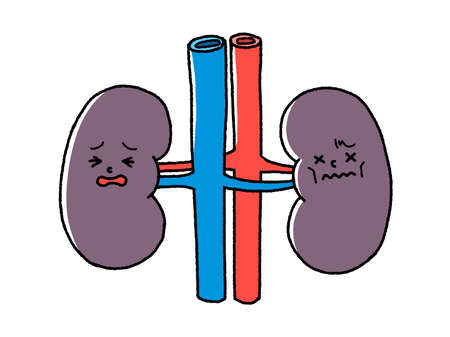Introduction to Acute and Chronic Back Pain
Back pain is a widespread health issue in the United Kingdom, affecting individuals across all age groups and significantly impacting quality of life and productivity. Understanding the distinction between acute and chronic back pain is fundamental for clinicians, as it informs assessment strategies and guides appropriate management in accordance with UK clinical guidelines. Acute back pain is typically defined as pain lasting less than six weeks, often resulting from a specific injury or strain. In contrast, chronic back pain persists for twelve weeks or longer, sometimes even after the initial cause has resolved, and may be associated with complex biopsychosocial factors.
The prevalence of back pain in the UK is striking; it is estimated that around one third of adults experience back pain annually, with lower back pain being among the most common reasons for GP consultations and work absences. Making an accurate distinction between acute and chronic presentations is essential, as the underlying causes, risk factors, prognosis, and recommended treatments can differ markedly. Early recognition and tailored intervention not only improve patient outcomes but also help reduce unnecessary investigations and healthcare costs. This article will explore the definitions, prevalence, and clinical importance of differentiating between acute and chronic back pain within the context of current UK guidelines.
2. Clinical Assessment of Back Pain in Primary Care
In UK primary care, the clinical assessment of back pain is a cornerstone for distinguishing between acute and chronic presentations, ensuring timely intervention and appropriate referral where necessary. General Practitioners (GPs) are encouraged to adopt a systematic approach during patient consultations, guided by NICE and other UK-specific guidelines.
History-Taking
Effective history-taking is vital in identifying the underlying cause and severity of back pain. Key areas to explore include:
- Onset and duration: When did the pain start? Is it sudden or gradual?
- Pain characteristics: Location, nature (sharp, dull), radiation to legs, aggravating or relieving factors.
- Impact on function: Limitations in daily activities or work.
- Associated symptoms: Fever, weight loss, night sweats, urinary or bowel changes.
- Medical history: Previous episodes, trauma, underlying conditions (e.g., malignancy, osteoporosis).
Table: History-Taking Focus Areas
| Area | Questions to Ask |
|---|---|
| Onset & Duration | When did the pain begin? Is it acute (<6 weeks) or chronic (>12 weeks)? |
| Pain Features | Describe the pain. Does it radiate? Is it worse with movement? |
| Functional Impact | Are you able to perform daily activities or work as usual? |
| Red Flag Symptoms | Any unexplained weight loss, night pain, fever, numbness, or bladder/bowel issues? |
| Relevant History | Have you had similar problems before? Any recent injuries? |
Physical Examination
The examination should be thorough but focused. GPs should assess:
- Inspection: Posture, gait, spinal alignment.
- Palpation: Localised tenderness or muscle spasm.
- Range of motion: Flexion, extension, lateral movements.
- Neurological assessment: Power, sensation, reflexes in lower limbs.
- Straight leg raise test: Especially if sciatica is suspected.
Red Flags Identification
The early detection of red flags is essential to rule out serious pathology such as cauda equina syndrome, infection, fracture, or malignancy. UK guidance emphasises prompt action if any red flag signs are present.
Red Flags Checklist for Back Pain
| Red Flag | Description/Implication |
|---|---|
| Saddle anaesthesia | Numbness around genitals/buttocks – consider cauda equina syndrome. |
| Bowel/bladder dysfunction | Difficulties with control may indicate neurological compromise. |
| Nigh pain/night sweats | Pain waking patient from sleep – consider malignancy/infection. |
| Unexplained weight loss/fever | Potential indicator of systemic disease. |
| Tumour history/Immunosuppression/Steroid use | Higher risk for serious underlying causes. |
| Significant trauma/osteoporosis risk factors | Pain after injury or in those at risk of fractures. |
NICE Best Practice Recommendations (UK Context)
- Avoid unnecessary imaging unless indicated by red flags or persistent neurological deficit.
- If red flags are identified, arrange urgent referral to secondary care or emergency services as appropriate.
- If no red flags are present and the presentation is acute (<6 weeks), support self-management and provide reassurance according to UK guidelines.
- If chronic features are present (>12 weeks), consider referral for physiotherapy or multidisciplinary assessment as per local pathways.
The structured approach outlined above aligns with UK best practice and ensures that patients presenting with back pain receive safe, effective, and patient-centred care in primary settings.
![]()
3. Red Flag Symptoms and When to Refer
When assessing patients presenting with back pain, it is crucial for clinicians in the UK to recognise red flag symptoms that may indicate serious underlying pathology. These red flags guide the need for urgent referral or further investigation in accordance with the National Institute for Health and Care Excellence (NICE) guidelines and established UK clinical pathways.
Recognising Red Flags in Back Pain Assessment
Red flag symptoms are warning signs that suggest the possibility of conditions such as cauda equina syndrome, spinal infection, malignancy, or significant fracture. Timely identification ensures prompt management and can prevent long-term complications. Key red flag indicators include:
- Severe or progressive neurological deficit, such as new-onset weakness, numbness, or difficulty walking
- Bowel or bladder dysfunction, particularly urinary retention or incontinence, which may suggest cauda equina syndrome
- Saddle anaesthesia—numbness around the genitals or buttocks area
- History of trauma, especially in elderly patients or those with osteoporosis
- Unexplained weight loss, fever, or night sweats, which may indicate infection or malignancy
- Past history of cancer
- Immunosuppression or recent infection
- Pain worse at night or unrelieved by rest
NICE Guidelines: When to Refer Urgently
NICE recommends immediate referral for hospital assessment if any red flag symptoms are present. In primary care settings across the UK, patients exhibiting these signs should be referred to secondary care services, such as A&E or specialist spinal units, without delay. Early referral can be life-saving and significantly improve patient outcomes.
Role of Primary Care Practitioners
GPs play a pivotal role in initial assessment and timely recognition of red flags. It is essential to take a thorough history and perform a focused examination. Where red flags are absent, most patients with acute or chronic back pain can be managed conservatively within primary care following NICE guidance.
Summary: Ensuring Patient Safety Through Vigilance
The identification of red flag symptoms is central to safe clinical practice in the management of back pain. Adhering to UK guidelines ensures patients receive the right care at the right time, supporting both safety and positive long-term health outcomes.
4. Evidence-Based Management Strategies
Effective management of back pain in the UK is firmly rooted in evidence-based guidelines, most notably those from the National Institute for Health and Care Excellence (NICE). Approaches differ according to whether the pain is acute or chronic, with an emphasis on minimising unnecessary interventions and promoting patient self-management.
Pharmacological Interventions
| Type of Pain | Recommended Medications | Key Considerations |
|---|---|---|
| Acute Back Pain | Paracetamol (not routinely recommended), Non-steroidal anti-inflammatory drugs (NSAIDs) as first-line, Short-term weak opioids if NSAIDs are unsuitable or ineffective | Use the lowest effective dose for the shortest duration; avoid long-term opioid use; consider gastroprotection with NSAIDs |
| Chronic Back Pain | NSAIDs as first-line, Antidepressants (such as amitriptyline) considered if other options fail, Opioids generally avoided | Avoid dependence and side effects; opioids only in exceptional circumstances; regular review of medication efficacy and side effects |
Non-Pharmacological Interventions
NICE guidelines strongly recommend non-pharmacological strategies for both acute and chronic back pain, promoting active recovery and reducing reliance on medication.
Physical Therapies and Exercise Programmes
- Acute Back Pain: Encourage patients to remain active and return to normal activities as soon as possible. Referral to physiotherapy is considered if symptoms persist beyond a few weeks.
- Chronic Back Pain: Structured exercise programmes—such as group classes, yoga, or physiotherapist-led sessions—are a mainstay. Manual therapies may be offered alongside but not as a sole treatment.
Psycho-social Interventions and Patient Education
- Cognitive Behavioural Therapy (CBT): Recommended particularly for chronic pain where psychological factors play a role.
- Patient Education: Reassurance about the favourable prognosis of most back pain episodes; advice on self-management strategies; information leaflets and online resources tailored to UK patients.
Surgical and Interventional Procedures
- Surgical intervention is rarely indicated for non-specific back pain and should only be considered when there are clear structural causes that have not responded to conservative management.
- Epidural injections or radiofrequency denervation may be considered in select chronic cases following specialist assessment.
Summary Table: Key Recommendations for Managing Back Pain in the UK
| Acute Back Pain | Chronic Back Pain | |
|---|---|---|
| Main Focus | Encourage activity, reassure patient, short-term symptom relief if needed | Active self-management, structured exercise, psychological support if required |
| First-line Medication | NSAIDs if needed, paracetamol not routinely used | NSAIDs, antidepressants if other treatments fail, avoid routine opioids |
| Non-Drug Treatment | Stay active, early mobilisation, brief physiotherapy if slow recovery | Structured exercise programme, CBT, education, multidisciplinary support for complex cases |
| Surgical/Other Procedures | Rarely indicated except for red flags (e.g., cauda equina syndrome) | Surgery/intervention only after failure of conservative measures and specialist input |
The cornerstone of managing both acute and chronic back pain in the UK remains a patient-centred approach—supporting individuals to maintain function and independence while using interventions judiciously in line with current evidence-based recommendations.
5. Role of Multidisciplinary Teams and Community Support
Effective management of both acute and chronic back pain in the UK requires a coordinated approach, bringing together expertise from various health professionals. According to NICE guidelines, multidisciplinary teams (MDTs) play a pivotal role in delivering patient-centred care, especially for individuals whose back pain persists or significantly impacts their daily life.
Coordinated Care Pathways
Timely assessment by GPs is crucial for identifying patients who would benefit from referral to allied health services. Physiotherapy remains a cornerstone of both acute and chronic back pain management, with evidence-based exercise programmes tailored to individual needs. For those with complex or persistent symptoms, referral to specialist pain clinics may be indicated, where MDTs—including pain consultants, psychologists, and physiotherapists—work collaboratively to formulate comprehensive management plans.
Accessing NHS Resources
The NHS offers a range of community-based resources designed to support people living with back pain. These include self-management education sessions, group exercise classes, and digital tools such as NHS-approved apps that promote active lifestyles and resilience. Local musculoskeletal (MSK) services also provide rapid access to assessment and early intervention, helping prevent progression from acute to chronic pain.
Community Support Networks
Beyond formal healthcare settings, many patients benefit from community support networks. Charities such as BackCare UK offer guidance, peer support groups, and educational materials that empower individuals to manage their condition more effectively. Social prescribing initiatives—now increasingly available through GP surgeries—can connect patients with local activities such as walking groups or yoga classes, supporting overall wellbeing and reducing isolation often associated with chronic pain.
In summary, the integration of multidisciplinary expertise and community resources ensures holistic care for back pain sufferers across the UK. This collaborative approach not only addresses physical symptoms but also attends to psychological and social aspects of recovery, reflecting best practice as outlined in current UK guidelines.
6. Patient-Centred Approach and Self-Management
Within the UK healthcare framework, a patient-centred approach is integral to the management of both acute and chronic back pain. By prioritising the individual needs, preferences, and values of each patient, clinicians can deliver care that is not only clinically effective but also meaningful to those experiencing pain. The National Institute for Health and Care Excellence (NICE) guidelines strongly advocate for empowering patients through active involvement in their care plans, fostering a partnership between healthcare professionals and individuals.
Empowering Patients Through Education
Education plays a pivotal role in enabling patients to understand the nature of their back pain—whether acute or chronic—and the likely prognosis. In the UK, tailored education is encouraged, ensuring information is relevant and accessible. This may include discussions about the difference between acute and chronic symptoms, realistic expectations of recovery, and recognising warning signs that require further assessment. Providing evidence-based written materials or directing patients to reputable online resources such as NHS.uk can enhance patient confidence and engagement in their care.
Promoting Self-Care Strategies
Self-management strategies are at the core of current UK guidelines. Patients are advised on safe ways to remain active, simple stretching exercises, posture awareness, and pacing activities to prevent flare-ups. For chronic back pain especially, ongoing self-care—supported by periodic review with a GP or physiotherapist—is linked to improved outcomes and reduced reliance on pharmacological interventions. Encouraging patients to set achievable goals helps foster a sense of control and ownership over their recovery process.
Supporting Long-Term Wellbeing
In line with the NHS’s holistic approach, addressing psychological wellbeing is crucial for those coping with persistent pain. Signposting patients to local support groups or resources such as Talking Therapies can be beneficial. Ultimately, by delivering person-centred care that includes education, encouragement, and access to supportive resources, UK healthcare professionals can empower individuals to manage their back pain effectively—promoting resilience and enhancing quality of life in both acute and chronic contexts.


